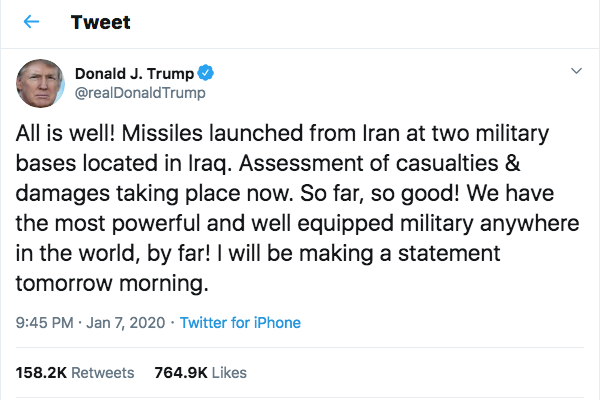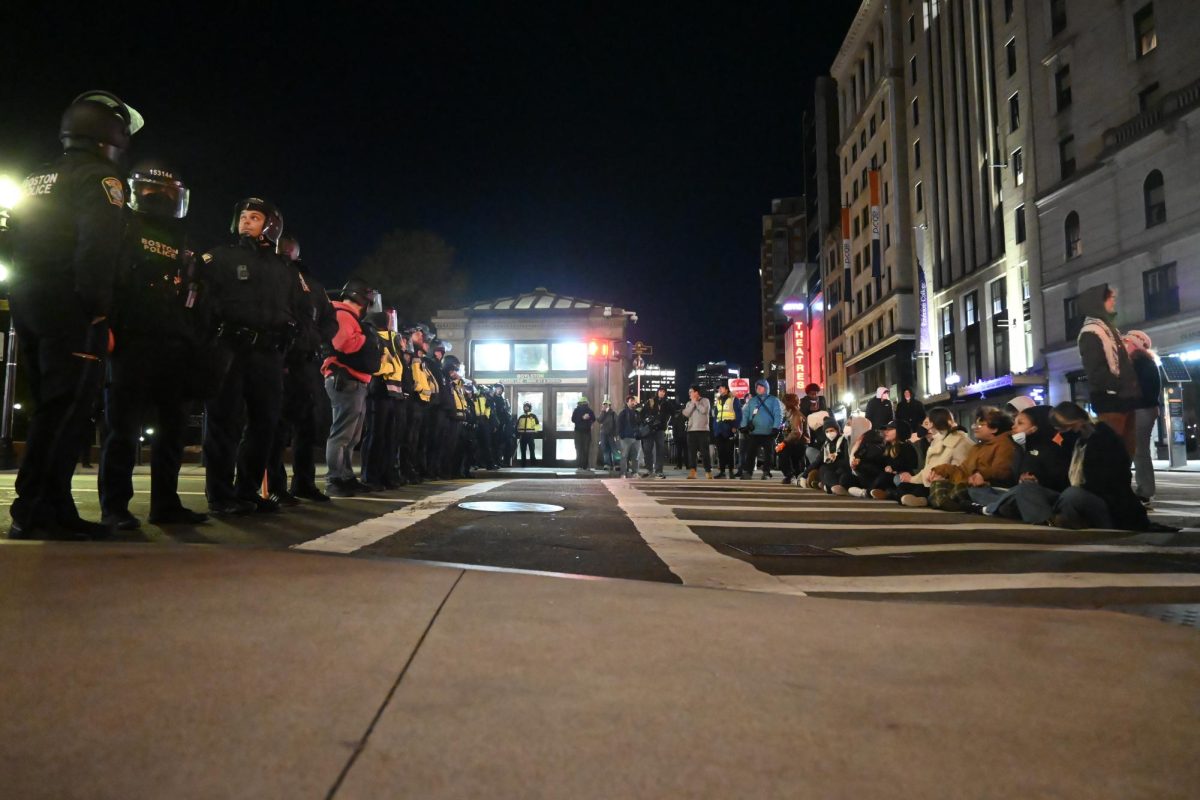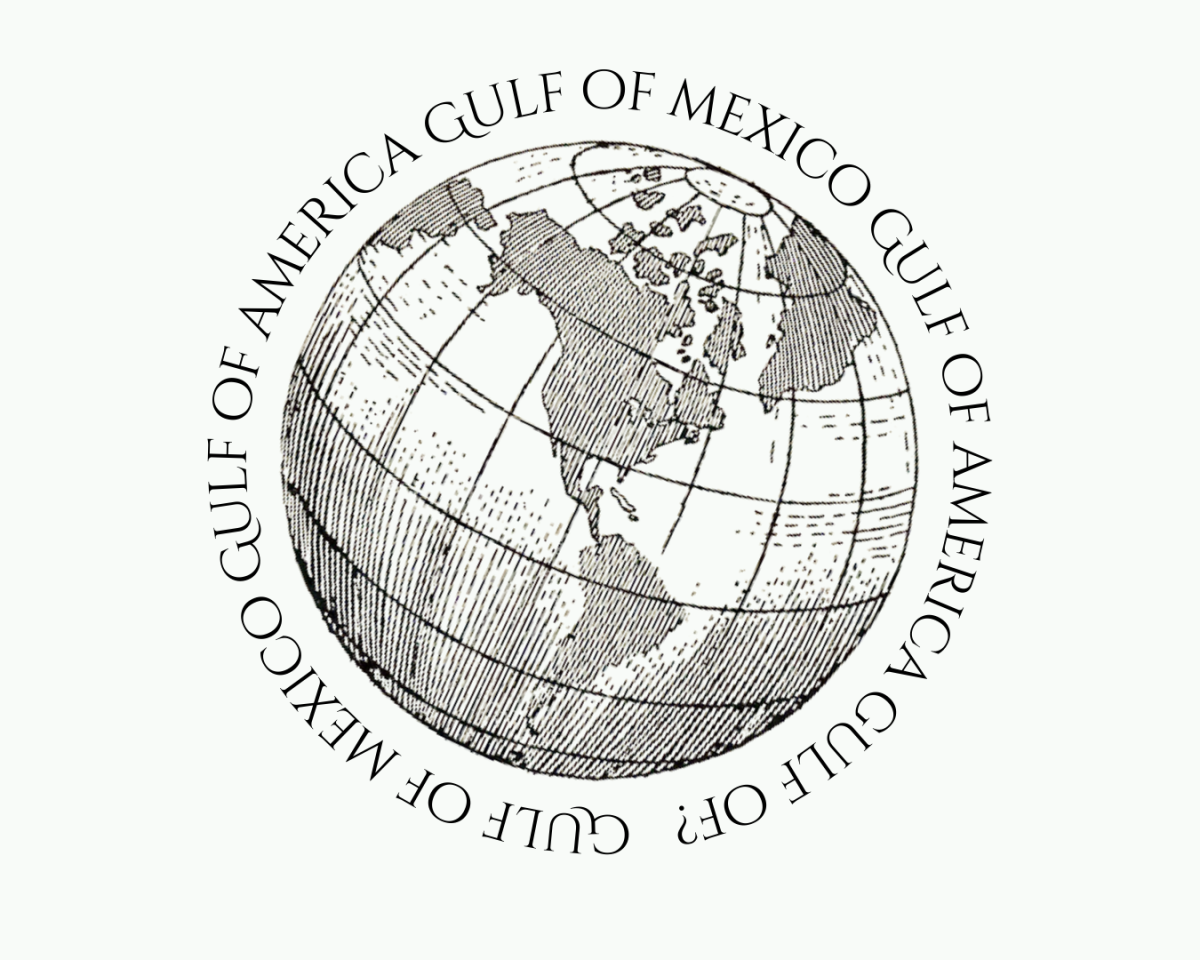Last Sunday three rockets struck the United States embassy compound in Baghdad. One person received minor injuries and has since returned to duty, according to CNN.
Calling out Iraqi Prime Minister Adil Abdul Mahdi, Secretary of State Mike Pompeo expressed his outrage at the ongoing assaults on U.S. facilities in Iraq, blaming Iran’s armed groups, State Department spokesperson Morgan Ortagus said.
Throughout January, there have been numerous attacks on the Baghdad Green Zone – a district where the U.S. and several other Western countries’ embassies are located. Officials have reported that the attacks on the U.S. facilities are believed to be due to the increased tension between U.S. and Iran.
Top Iranian General Killed in Airstrike
A new cycle of tension has been sparked between the U.S. and Tehran with the assassination of Qasem Soleimani, Iranian Major General of the Islamic Revolutionary Guard. He was killed in a drone strike near a Baghdad airport sanctioned by President Trump at the beginning of January.
“Soleimani was plotting imminent and sinister attacks on American diplomats and military personnel, but we caught him in the act and terminated him,” said President Trump to the New York Times after the attacks. “We took action last night to stop a war, we did not take action to start a war.”
Soleimani was a renowned Iranian General and was considered the second most powerful person in Iran behind the supreme leader Ayatollah Khamenei.
Soleimani was in charge of the Quds Force – a division specializing in military intelligence and operations outside Iranian soil. Under the command of Soleimani, the Quds coordinated the actions of multiple Shiite militia groups around the Middle East to launch attacks on U.S. military in Iraq and Israel.
Thousands attended Soleimani’s funeral in his home city of Kerman – sparking a stampede that killed more than 50 people injured over 200, according to the Washington Post. Several thousands of people followed the coffin, shouting “death to America” and “death to Trump”.
Iranian officials called the attack “an act of war” and vowed that it would be met with “revenge, harsh revenge,” according to the New York Times.
Iran United Nations ambassador Takht Ravanchi called the attack an “act of terror” and announced that the nation “cannot just remain silent” and “will act,” according to the New York Times.
Iran Ends Nuclear Deal
As the first consequence of the U.S. attack on Soleimani, Iran decided to abandon the nuclear agreement on January 5. This agreement limited the level and capacity of uranium enrichment in Iran.
Iranian officials announced that Iran’s nuclear program will no longer have limitations in production, according to the New York Times, marking the collapse of the 2015 nuclear deal.
The nuclear agreement was signed between Iran and the UN Security Council in 2015 with the goal of preventing the development of nuclear weapons. Since the agreement has been abandoned, Iran is now capable of producing weapons-grade uranium.
Warning Iran, President Trump said the U.S. had pinpointed 52 targets in Iran – including cultural sites, meant to represent 52 American hostages held in the U.S. embassy in Tehran during the Islamic Revolution in 1979, according to the New York Times.
Javad Zarif, Iran’s foreign minister called targeting cultural sites “war crimes” on twitter in response to Trump’s comments.
Iran Launched 22 missiles at the U.S. troops
On January 8, several hours prior to Soleimani’s funeral, Iran launched an airstrike on U.S. forces stationed at two bases in Iraq. Iranian forces had fired 22 ballistic missiles at the base in Erbil and Al Asad airbase, according to the New York Times.
The airstrike resulted in destruction of the base’s infrastructure and 34 servicemen were injured, according to the Department of Defense.
CNN anchor Jake Tapper tweeted that he was told by a Pentagon official that U.S. leaders feel “Iran deliberately chose targets that would NOT result in loss of life especially US life.”
“Iran took & concluded proportionate measures in self-defense,” tweeted Iran’s foreign minister Javad Zarif. “We do not seek escalation or war, but will defend ourselves against any aggression.”
The airstrike became a previously unseen example of open aggression between Iran and the U.S., as Tehran had fired the missiles from inside their borders – not relying on Iranian-backed proxies in Iraq.
That same day President Trump tweeted, “All is well! Missiles launched from Iran at two military bases located in Iraq. So far, so good! We have the most powerful and well equipped military anywhere in the world, by far!”
Ukrainian Plane Shot Down by Accident
While Iranian military launched an airstrike at U.S. bases, a Ukrainian plane flying from Tehran to Kyiv crashed shortly after take off on January 8. Initially, officials announced that the possible reason for the crash could have been an engine malfunction.
However, on January 11, Iranian officials admitted that the Ukrainian International Airlines flight 752 was shot down by two Iranian missiles from a nearby military facility, resulting in death of 176 people.
Iranian military blames human error and said the plane had been misidentified as a cruise missile, according to the New York Times.
“This incident is a huge tragedy, not only for Ukraine but for the rest of the world as well. It is truly sad that innocent people died due to this ongoing conflict between the US and Iran,” said Suffolk graduate student Volodymyr Medin, from Ukraine.
In a Twitter post, Iran’s foreign minister Javad Zarif apologized, however, also blamed the U.S.
“Human error at time of crisis caused by US adventurism led to disaster,” tweeted Zarif.
“It is also hard to believe that in today’s technologically advanced world this kind of human errors could even occur,” said Medin. “I condole with the families of the victims and hope they get the justice they deserve.”





















